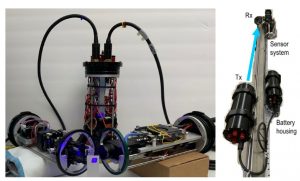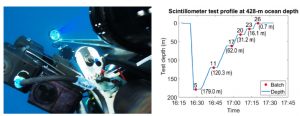The use of imaging and free-space optical communication is increasing in underwater applications. Optical communication and inspection of piers, pilings, or ship berthing areas requires overcoming the constantly changing characteristics of the water, especially in the ocean. Researchers from the Naval Information Warfare Center Pacific (U.S.) and the University of Central Florida have designed and developed new algorithms and a portable scintillometer to characterize ocean turbulence for imaging and free-space optical communication applications. Suspended particulates scatter light and organic material absorbs light in the ocean, but ocean turbulence can limit resolution of imaging due to temperature gradients (thermocline) or salinity. As turbulence is not constant in relation to water depth, a real-time characterization of turbulence conditions is needed. With this design, the refractive-index structure parameter (C
n2) and the inner scale of optical turbulence (ℓ
0) were measured at 1.9 x 10
-11 m
-2/3 to 2.3 x 10
-10 m
-2/3 and 0.1 to 0.3 mm, respectively, correlating to measured thermocline parameters.
A superluminescent light emitting diode (SLED) served as the scintillometer source for optical ocean turbulence characterization in place of the commonly used laser diode. The SLED still requires stable current and temperature control in the portable design. Wavelength Electronics’ LDTC1020 laser diode and temperature controller provided the closed-loop control of the SLED’s drive current and temperature with minimal noise and high temperature accuracy. The LDTC1020 aided in the small footprint and mass required for the portable system.
The complete case study is available as CS-LDTC11.



